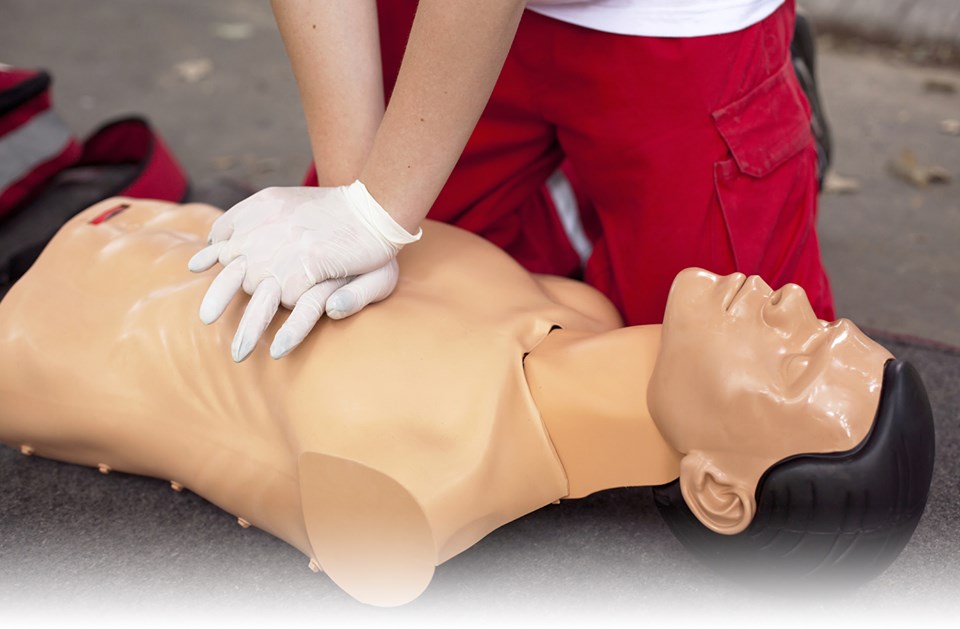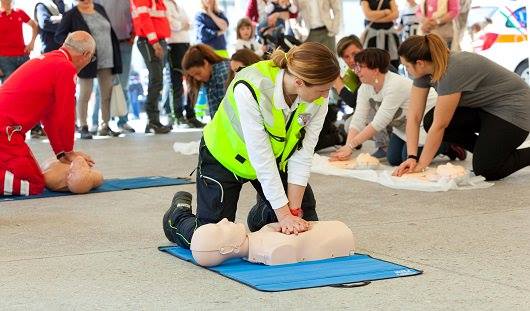There are a couple of obvious cautioning signs, which demonstrate when to perform CPR on someone else:
- Suddenly unconscious
- No or restricted breathing
- No heartbeat
The encompassing conditions can likewise educate you about whether CPR is required. For example, if the individual was shocked or suffocated; or on the off chance, that they were presented to medications or breathed in smoke from a flame. These kinds of circumstances can call for CPR. So, if you face any such situation where you come face to face with such type of a person, are you ready to help to offer CPR? If you are hesitant, it is the right time that you have CPR Certification Online from us at American Safety Training Institute.
Our courses will help you to offer the best of relief to such a person who requires immediate help. Our CPR Certification Training will also help you to come out of the fear that people suffer when they have to offer CPR.
The response to that question is quite often “right away.” Picture this: you are strolling down the road, and somebody before you falls over with no notice. On the other hand, you are driving on the thruway, and you see a mishap by the side of the street. Somebody is lying alongside the vehicle—and they are not moving.
What do you do? How would you know when to do CPR? Here are a couple of interesting points.
In the first place, call 911 or have somebody call for you. Seconds counts concerning choosing when to give CPR—and this assurance require some time. So before you attempt to figure out what is going, call 911 or have somebody close by a call for you. That way rescuer will be en route at the earliest opportunity.
Are the victims responding? Have a go at shaking or waking the individual. Is it true that they are unconscious, or would they say they are responsive, however confused? CPR is mostly called for if the individual is unconscious.
Is it true that they are breathing? Is their chest rising and falling? Would you be able to hear them breathing in the event that you listen near their mouth and chest? Would you be able to feel their breath on your skin? If not, they may require CPR.
Do they have a heartbeat? Often it is difficult to discern whether somebody has a pulse, particularly in case you are a layman with no medicinal preparing. You can check rapidly by utilizing your forefinger and center finger on the individual’s wrist—directly at the base of their thumb. Try not to use your very own thumb—as you have a heartbeat there that may befuddle your perusing.
Utilize your gut. It can require some time to search for a heartbeat in a crisis circumstance, mainly when you have never done it. On the off chance that the awful happens, utilize your best judgment. In case you are experiencing difficulty finding the beat or are not sure if the individual is breathing; however, it is that they are unconscious, you have to begin CPR right away.
It just takes minutes for irreversible cerebrum damage to happen—and death can happen not long after that. Therefore, a quick reaction is critical. You can offer the best of CPR if you are yourself CPR certified having CPR Certification after having training from us.
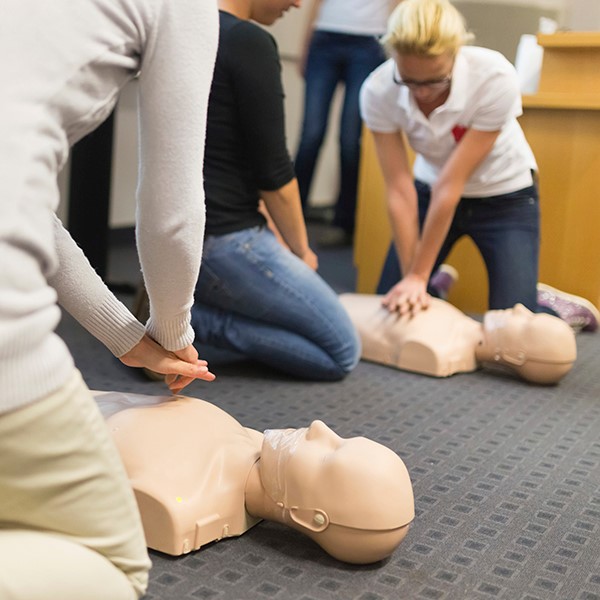 At the point when to think about your security
At the point when to think about your security
In some cases, it is not sheltered to give CPR. We are not stating that you should not stop and help at whatever way you can—yet now and again, you need to assess the scene and utilize your best judgment. Here are a few things to be cautious about.
Be careful with criminals. Criminals sometimes force great Samaritans into halting by utilizing an “unfortunate casualty” as bait. Ladies without anyone else are a specific objective. In case you are without anyone by your side and feel like something might be off about a situation, tune in to your gut and call 911.
Watch out for electric shock. Are there brought down electrical cables close by? Do you speculate the unfortunate casualty may have been shocked? If this is true, it is hazardous to approach an injured individual until cutting the source of power. Continue with alert here.
Evaluate the scene. Is the unfortunate casualty in a spot where it is risky for you to be—in a flaming structure, in a bustling road, or a quickly flooding zone? While we urge onlookers to give CPR at whatever point they can, we do not recommend you to place your own life in peril.
Regardless of whether you cannot convey lifesaving CPR, it is fundamental to call 911 so rescuers can get to the person in question. Calling 911 rapidly may even now spare the individual’s life.
If you find the situation safe and conducive, then our training will help you to save the lives of many innocent persons requiring immediate help.
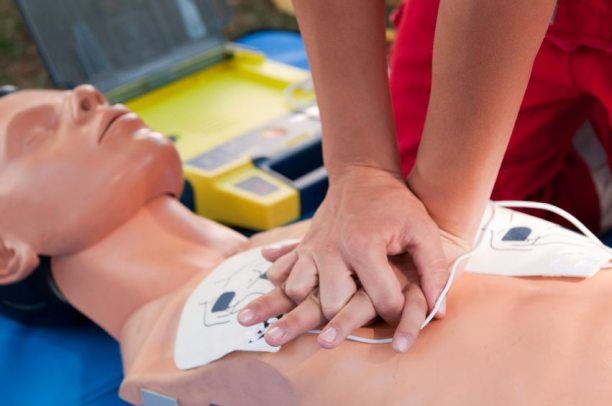 At the point when to quit giving CPR
At the point when to quit giving CPR
When you start CPR, do not stop except if one of these things occurs:
The injured individual ends up responsive or starts breathing.
Another prepared rescuer or EMS workforce arrive and dominate.
An AED becomes accessible.
You are exhausted to continue.
The area winds up risky.
Under more established rules, rescuers would mostly stop CPR following 30 minutes—as in the event that the unfortunate casualty had not revived by, at that point, they would not.
Notwithstanding, the American Heart Association currently expresses that giving CPR for up to 38 minutes can majorly affect the patient’s odds of recuperation. They additionally state that propping CPR up that long can improve the function of the brain in survivors of heart failure.
A few people have even recouped following at least three hours of CPR, as seen in some cases. Nowadays, there is no prohibited time to stop CPR, except if one of the above circumstances happens.
Persons having CPR Certifications after having training from us are aware of these rules and can offer the best help. You can also be the best friend of such a person having training from us.
Where are individuals destined to require CPR?
The response to that is “anyplace.”
Heart failure can happen all of a sudden, in individuals who have no earlier heart issues or manifestations. Furthermore, most of the heart failures happen outside of the medical clinic, which means observers are an injured individual’s first and most apparent opportunity concerning getting lifesaving CPR right away.
Roughly, 10,000 heart failures occur in the work environment consistently, and more than 395,000 happen outside of an emergency clinic. That contrasted with around 200,000 heart failures happen in a medical clinic setting.
This implies in case you’re called upon to convey CPR—except if you’re a human services proficient—the in all probability place you’ll be individual, approaching your day in a spot where crisis administrations aren’t promptly accessible. The injured individual could be a relative, colleague, or outsider.
Not every person has the certainty to respond rapidly and convey crisis care in an unexpected circumstance. Taking CPR training from us and getting certified can enable you to get ready to assume responsibility while you trust that crisis responders will arrive—and it merits doing.
It is good to spare time from your busy schedule to become familiar with the most straightforward type of CPR, and realizing how to do it could enable you to save an actual existence—potentially the life of somebody you know.
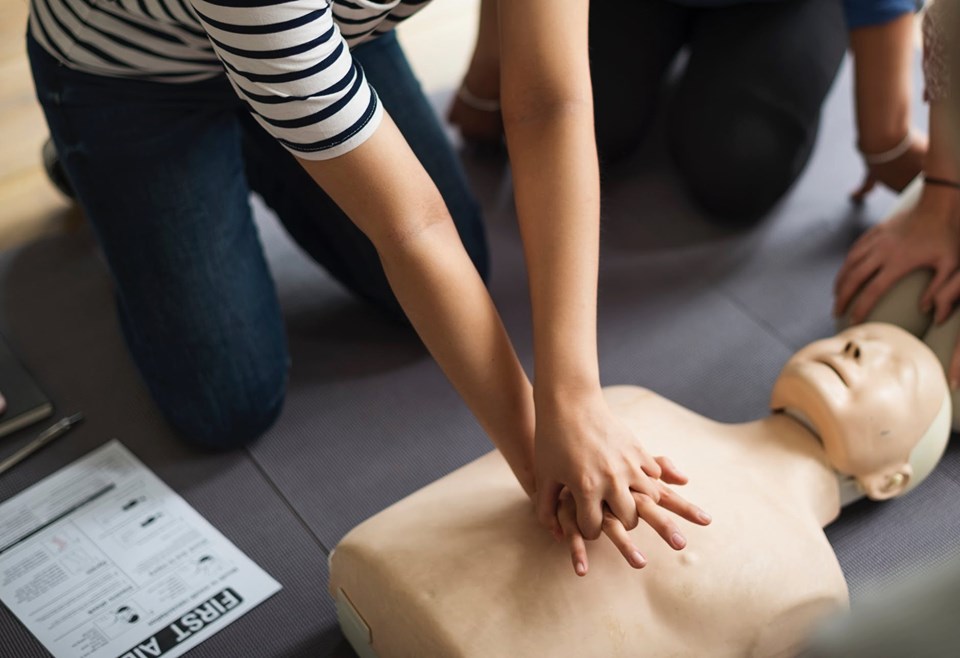 The training that helps to over the fear
The training that helps to over the fear
For individuals who endure heart failure outside of an emergency clinic, the most significant distinction between the individuals who endure and the individuals who do not is that an onlooker did CPR on the survivors.
The thing that matters is that obvious. CPR can twofold or even triple the opportunity of endurance. Furthermore, for the individuals who endure heart failure outside of a clinic, enduring regularly means getting CPR from a passing nonprofessional who may not be a medicinal expert.
That is the reason it is so essential for everybody to have training in CPR, and be happy to convey it if need be. Interestingly, heart failure exploited people do not get CPR from observers as regularly as possible. Spectators are frequently hesitant to do CPR—regardless of whether they have experienced preparing, and despite the fact that they could spare an actual existence.
Here are some usual misguided judgments and fears that shield individuals from giving lifesaving care at the most critical moment.
The dread of harming the person in question
Numerous individuals waver to do CPR since they stress that they may accomplish more damage than anything else may. They may even break a rib.
The thing is, in case, you are performing CPR right, and it is probably going to break ribs. Compressions ought to be at a profundity of around two inches on a fully-developed grown-up to get the blood flowing in the body. That takes approximately 60 pounds of pressure.
As indicated by a recent report, the same number of as 86% of men and 91% of ladies encountered bone damage in the chest in the wake of accepting CPR—including sternum cracks, rib breaks, and sternocostal partitions.
In any case, these wounds are survivable. Heart failure is not, except if the unfortunate casualty gets prompt lifesaving care. The vast majority would concur that a couple of broken ribs are desirable over death.
The dread of legal prosecution
That is fine and dandy—yet you can imagine a scenario where, in the wake of sparing somebody’s life by conveying CPR, that individual turns around and sues you for your activities.
It is conceivable yet improbable. Great Samaritan laws fluctuate by state; however, all have securities for onlookers conveying CPR. It is in light of a legitimate concern for the nation to urge individuals to give CPR, and the law reflects that.
For whatever length of time that you are reacting in a manner, in which a sensible individual would, giving consideration as indicated by your degree of training, and not having compensation for your activities, these laws ought to shield you from legal prosecution.
The dread of getting a sickness
It is common to have a natural yuck factor response about CPR revival. For some, the plausibility of contracting an infectious illness prevents them from helping a heart failure injured individual—notwithstanding when they know CPR.
You can contract microscopic organisms and infections through mouth-to-mouth contact with a contaminated individual. The odds are low that this will occur during rescue breathing, yet it is conceivable.
Nevertheless, you do not have to give salvage breaths to convey successful CPR. As of late, the AHA discharged new rules for hands-only CPR that require lay rescuers just to “drive firm in the focal point of the chest,” to the tune of “Stayin’ Alive” by the Bee Gees. You can skirt the mouth-to-mouth part entirely.
Hands-only CPR is similarly as successful as customary CPR in observer rescue circumstances. In specific examinations, it is much progressively compelling—perhaps in light of the fact that individuals are even more ready to give this sort of CPR in any case.
The dread of doing it incorrect
Studies have demonstrated that about 70% of Americans do not have the certainty to do CPR in a crisis circumstance—and would be hesitant to give it to this explanation.
Once more, that is the place hands-only CPR comes in. It is less muddled than the conventional rendition. There is no compelling reason to attempt to recollect the proportion of compressions to protect breaths or hinder your compressions from giving breaths.
Hands-only CPR is exceptionally simple to learn and regulate—notwithstanding for individuals with no therapeutic preparing. There is exceptionally just one stage—push hard in the focal point of the chest.
Today, anybody can learn and oversee CPR—and we lead the institutes from where you can have the learning to help a person in dire need.
The dread of inappropriate touching
As indicated by an investigation directed by scientists at UPenn, women are less inclined to get CPR than men—since certain rescuers are reluctant to contact a female unfortunate casualty’s chest.
This has genuine outcomes. The examination found that men were 23% bound to endure heart failure than women since rescuers were increasingly hesitant to convey CPR to women. In looking at more than 20,000 cases across the nation, the examination found that lone 39% of women in heart failure outside of a medical clinic got CPR—rather than 45% of men.
More than 350,000 individuals endure heart failure in America every year outside of a clinic setting. Around 90% of them do not survive. Those numbers may have changed if there was CPR training—and the learning to defeat these misinterpretations.
What happens in the event that you fail at CPR and someone dies?
In case you are a healthcare provider, this might be an unfortunate event in your life. Nevertheless, in the fact that you are not—in case you are only a bystander and you all of a sudden end up called upon to give CPR—it very well may be devastating when you offer everything to attempt to save somebody, and they do not make it. It is not bizarre, however—and you should not give the dread of an awful result a chance to shield you from learning the abilities you need to give CPR.
Here are a few instances of the inquiries and concerns we have heard from individuals in our CPR classes about what happens when the result is not the best.
- On the off chance, that I give CPR and the patient dies, in what manner will I live with myself?
The main thing you have to acknowledge, if this transpires, is that it is not your deficiency. That merits rehashing: in the event that somebody dies despite the fact that you did as well as expected to give him or her CPR, it is not your issue.
What a great many people do not understand is that, despite the fact that it can spare lives; CPR alone is not intended to.
At the point when an individual needs CPR, it is because their heartbeat and breathing have halted—clinically, they are as of now dead. What CPR is intended to do is move oxygenated blood through a clinically-dead body to purchase the unfortunate casualty only a couple of more minutes for therapeutic faculty to arrive and prevent organic demise—which happens when the cerebrum doesn’t get oxygen for more than a couple of minutes.
CPR does not spare lives alone. The procedure conveys about 25% of the oxygen to the cerebrum that it needs to endure; it is not to keep an individual alive long or reestablish them to wellbeing all alone.
Likewise, in spite of what we find in films and TV shows, CPR works in just a limited quantity of cases notwithstanding when conditions are right. Only about 2% to 18% of individuals who get CPR endure. The number relies upon the investigation you read; life is dependent on whether the injured individual got CPR before paramedics arrive and an assortment of different variables. In any case, even at the top of the line, death is by far the more typical result, regardless of the rescuer’s earnest attempts.
For the most part, CPR is to give an individual a superior possibility at endurance while they trust that medicinal assistance will arrive—however that shot is yet thin, and many do not make it. That is not your shortcoming.
- Imagine a scenario in which I give CPR, the patient dies and the family sues. Will I be in a tough situation?
There is another stress numerous individuals have when somebody dies after CPR—the fear is about legal prosecution. In the present hostile atmosphere, is anything but an outlandish concern. What’s more, when a few offices venture to such an extreme as to deny their representatives to convey CPR in specific situations, even to individuals who could die without it—and have—it is anything but difficult to accept that a claim is an unmistakable plausibility on the off chance that you give CPR and something turns out badly.
Actually, as an onlooker, you are probably not going to be sued for giving CPR, paying little heed to the result—and on the off chance that you are, it’s outlandish that the judgment will be against you. Here is the reason.
Most states have a Good Samaritan law set up that is intended for precisely this circumstance—to ensure individuals who give CPR in compliance with common decency. Mostly, you should carry on of magnanimity, not for a longing for fiscal reward—and expecting payment for conveying CPR, even sometime later, can debilitate those legitimate insurances.
The law differs by state, thus does whether you should be CPR certified for them to apply. In certain states, the law is intended to apply to individuals with restorative training—that may likewise apply to individuals with CPR accreditations. In other states, everybody is secured, paying little heed to their confirmation status.
Most Good Samaritan laws do not cover individuals who give care that they are amazingly undertrained to convey. For example, on the off chance that you are not a specialist and endeavor extemporaneous medical procedure on the walkway to spare a patient, you might be at risk in court for the result. Notwithstanding, in cases that aren’t that extraordinary, this doesn’t make a difference in the event that you aren’t CPR certified or your certification has slipped by, and you convey CPR at any rate.
In certain states, you might be legitimately required to give CPR—regardless of whether the unfortunate casualty dies, you may have had no other choice. This applies for the most part to individuals in the medicinal profession, for example, specialists, attendants, EMTs, and people on a call. Individuals in this classification regularly have an “obligation to act,” which means they should give CPR under the law, even to the point of halting on the off chance that they see a mishap on a highway.
In Vermont, that law reaches out to general onlookers. Everybody, even non-restorative workforce, is required to give “sensible help” to an injured individual insofar as giving it does not place the rescuer in threat. Regardless of whether the individual you gave CPR die, you may have been lawfully required to provide that care—and it is impossible for to face any charge for anything in the court.
A few people stress over the prerequisite agree to give CPR. The facts demonstrate that the patient should, for the most part, decide to get CPR. Notwithstanding, if the patient is hindered to the point that they can’t give consent—as in instances of heart failure—the law, for the most part, anticipates that rescuers should accept assent. At the point when CPR is required, each moment and second tallies, so it does not bode well to attempt to get consent first from an oblivious patient.
We caution that we are not legal counselors and nothing from what just mentioned should be treated as lawful guidance. On the off chance that you have worries about your particular circumstance, it is ideal for conversing with a legal counselor.
- Imagine a scenario where I gave CPR, the individual die and I discover later about their DNR
A DNR—or “Don’t Resuscitate”— request should shield patients from getting CPR and other lifesaving care on the off chance that they don’t need it, regardless of whether they are weakened and can’t advise rescuers not to give them the consideration.
In some cases, you find out about occasions in the news where a medical attendant or other CPR-ensured staff part is kept from giving CPR to a patient who needs it. More often than not, that is because the patient has a DNR, and the employer has a fear of legal prosecution. Nevertheless, Good Samaritan laws typically ensure spectators who do not have a clue about the unfortunate casualty. This is because it is not possible for them to know about a patient’s DNR, as long as they are acting in the patient’s eventual benefits in consistence with their preparation.
Taking all things together, it is 100% justified, despite all the trouble to learn CPR skills and convey CPR to somebody who needs it—regardless of whether the result is not a positive one. Also, you are incredibly far-fetched to fall into any hardship if the individual you are conveying CPR to doesn’t endure—state laws are intended to secure good-natured onlookers. Regardless of whether the patient does not survive, you have allowed that individual to survive, and at times, it will work. You can never know early which it will be, and anything merits, giving a withering individual an expanded shot of endurance.

